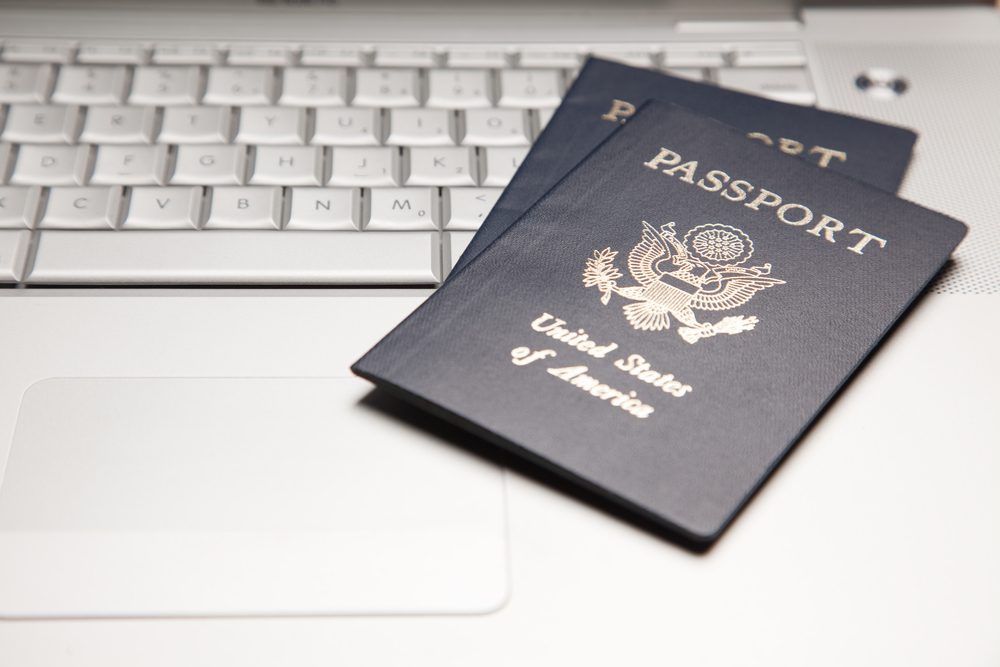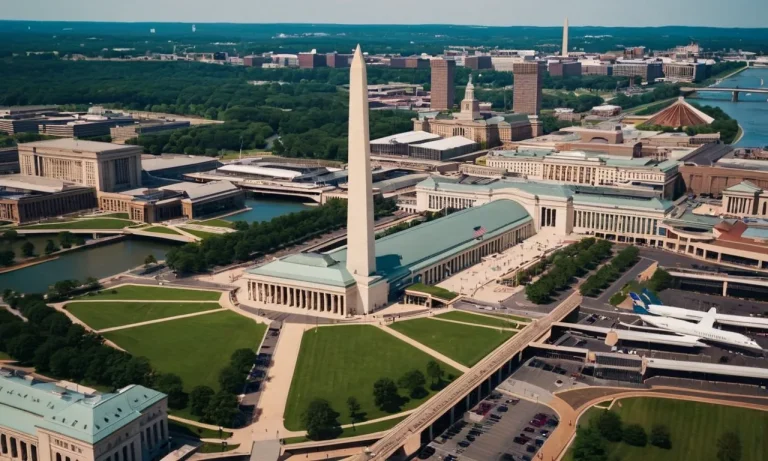Applying for a visa or passport renewal often requires submitting scans or copies of your passport. With everything going digital, is it actually safe to send your passport by email?
If you’re in a hurry, the short answer is no: Email is not considered secure for sending full passport copies.
Use safer options like encrypted file transfers or password-protected documents.
In this comprehensive security guide, we’ll examine the risks of emailing passports and safer alternatives.
We’ll look at email vulnerabilities, what info thieves can access, more secure digital options when physical copies are required, steps to safely share scans and extra precautions you can take.
Why Emailing Passports Isn’t Secure
When it comes to sensitive documents like passports, security should always be a top priority. Unfortunately, email is not the safest method for sending such important documents.
Here are a few reasons why emailing passports is not secure:
Emails aren’t encrypted
One of the main reasons why emailing passports is risky is that emails are not typically encrypted.
This means that the contents of the email, including any attachments such as your passport, can be easily accessed by anyone who intercepts it.
Encryption adds an extra layer of protection by encoding the information so that only authorized parties can decipher it.
Without encryption, your passport could be vulnerable to unauthorized access.
Hackers can access unencrypted data
Hackers are constantly on the lookout for any opportunity to access sensitive information, and unencrypted emails are a prime target.
Once a hacker gains access to your email account, they can easily retrieve any attachments, including your passport.
This puts your personal information at risk of being used for identity theft or other malicious activities.
It’s important to remember that even if you trust the recipient of your email, there’s no guarantee that their email account is secure.
Public Wi-Fi makes hacking easier
Another factor that makes emailing passports unsafe is the use of public Wi-Fi networks.
When you send an email containing your passport from a public Wi-Fi hotspot, you run the risk of the data being intercepted by hackers who may be lurking on the same network.
Public Wi-Fi networks are notoriously insecure, and it’s easy for hackers to gain access to the information being transmitted over these networks.
It’s always best to avoid sending sensitive documents over public Wi-Fi.
Given the risks involved, it’s clear that emailing passports is not a secure method of transmission.
Instead, it’s recommended to use more secure methods such as encrypted file-sharing services or secure online platforms specifically designed for document transmission.
By taking these precautions, you can ensure that your passport and personal information remain protected.
What Identity Thieves Can Access
When sending your passport by email, it is important to understand what information identity thieves can potentially access.
Here are some key pieces of information that could be compromised:
Full name and birthdate
Your full name and birthdate are essential components of your identity.
If intercepted by hackers, this information can be used to commit various forms of identity fraud.
Passport number
Your passport number is a unique identifier assigned to your passport.
It is often used for verification purposes and can be exploited by identity thieves for illegal activities.
Citizenship and place of birth
Knowing your citizenship and place of birth can provide hackers with valuable information that can be used for identity theft or even to gain unauthorized access to your personal accounts.
Digital copies of photo page
When you send your passport via email, you may be attaching digital copies of the photo page.
These copies contain a clear image of your passport photo, which can be used by identity thieves to create fake identification documents.
It is important to remember that any information sent electronically can potentially be intercepted or accessed by unauthorized individuals.
Therefore, it is crucial to take necessary precautions to protect your personal data.

More Secure Digital Sharing Options
When it comes to sharing important documents like your passport, it’s crucial to prioritize security.
While email can be convenient, it may not always be the most secure option. Fortunately, there are alternative methods that offer a higher level of protection for your sensitive information.
Here are some more secure digital sharing options to consider:
Encrypted file transfer services
One of the most secure ways to share your passport or any other sensitive document is by using encrypted file transfer services.
These services use advanced encryption algorithms to protect your files during transit.
They ensure that only the intended recipient can access the files by encrypting them with a unique key. Some popular encrypted file transfer services include Dropbox, WeTransfer, and Google Drive.
Password-protected PDFs
Another option to enhance the security of your digital document sharing is by using password-protected PDFs.
This allows you to set a password that the recipient must enter to open the document.
When choosing a password, make sure to use a strong combination of letters, numbers, and special characters to maximize security.
This way, even if the email or file gets intercepted, the password will act as an additional layer of protection.
Blocking copy/paste or downloads in PDF
If you want to further restrict access to your passport or other sensitive documents, you can block the ability to copy/paste or download the content within a PDF.
This prevents recipients from easily sharing or saving the information without your permission.
Most PDF editing software, such as Adobe Acrobat, allows you to apply these restrictions when creating a PDF.
Secure online portal provided by recipient
In some cases, the recipient of your passport may provide a secure online portal for document submission.
This portal typically requires you to create an account and upload the document directly to their platform.
These portals often have robust security measures in place, such as encryption and multi-factor authentication, to ensure the safety of your personal information.
It’s important to verify the legitimacy and security of the online portal before uploading any sensitive documents.
Remember, while these options offer increased security compared to sending your passport via email, it’s still essential to exercise caution and follow best practices.
Always double-check the recipient’s email address or online portal URL to prevent falling victim to phishing attempts.
Additionally, regularly update your devices and software to protect against any potential vulnerabilities.
When Physical Copies Are Required
While the digital age has made many aspects of our lives more convenient, there are still situations where physical copies of important documents are required.
This is particularly true when it comes to passports.
Applying for certain visas
If you are applying for certain visas, such as a work or student visa, it is often necessary to submit a physical copy of your passport.
This is because immigration authorities require these documents to verify your identity and ensure that you meet the necessary requirements for entry into the country.
Registering with immigration authorities
When registering with immigration authorities in a new country, you may be asked to provide a physical copy of your passport.
This is done to establish your identity and legal status in the country. It is important to comply with these requirements to avoid any complications or delays in the immigration process.
Extended overseas stays
If you are planning to stay overseas for an extended period of time, it is advisable to have a physical copy of your passport with you.
This can be useful in case of any emergencies or situations where you need to prove your identity or citizenship.
It is always better to be prepared and have a physical copy on hand.
Establishing residency status
When establishing residency status in a new country, you may be required to provide a physical copy of your passport as part of the application process.
This is done to verify your identity and ensure that you meet the necessary criteria for residency.
It is important to follow the guidelines provided by the relevant authorities in order to successfully establish your residency status.
Safely Sending Scans When Required
When it comes to sending important documents like your passport through email, it’s crucial to take the necessary precautions to ensure their security.
Here are some tips to safely send scans when required:
Delete file immediately after sending
Once you’ve sent the scanned copy of your passport, it’s important to delete the file from your computer or any other device you used to create it.
This minimizes the risk of unauthorized access to your personal information in case your device gets compromised.
Confirm recipient deletes after use
Before sending the scanned copy, make sure to communicate with the recipient and ask them to delete the file as soon as they no longer need it.
This adds an extra layer of security and reduces the chances of your passport information being stored or misused.
Send low resolution scans
When sending scans of your passport, it’s advisable to reduce the resolution of the image.
This not only reduces the file size, making it easier to send and receive, but also lowers the risk of someone being able to use the scan for fraudulent purposes.
Black out unnecessary personal details
Before sending the scan, consider using an image editing tool to black out any unnecessary personal details on the document.
This could include your social security number, driver’s license number, or any other sensitive information that is not required for the recipient’s purpose.
By following these guidelines, you can significantly enhance the security of your scanned passport and reduce the risk of identity theft or fraud.
Conclusion
While emailing passport copies is quick and convenient, it poses serious security risks without encryption.
Using safer digital transfer options, only sending scans when absolutely required, and taking precautions allows you to protect your personal data from identity theft.
Your passport contains sensitive personal information, so it’s critical to keep it secure, especially online.
With some vigilance, you can safely navigate the digital realm to submit what you need for passport services while avoiding exposing yourself to fraud.






